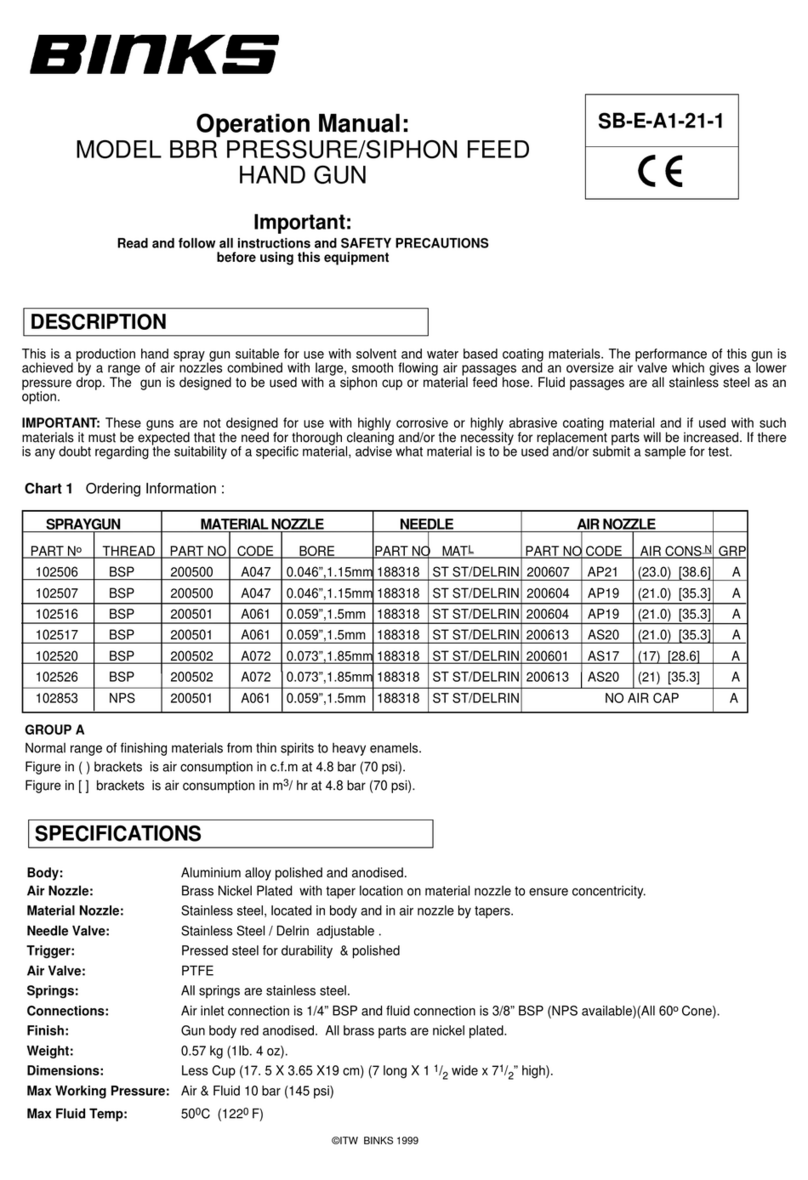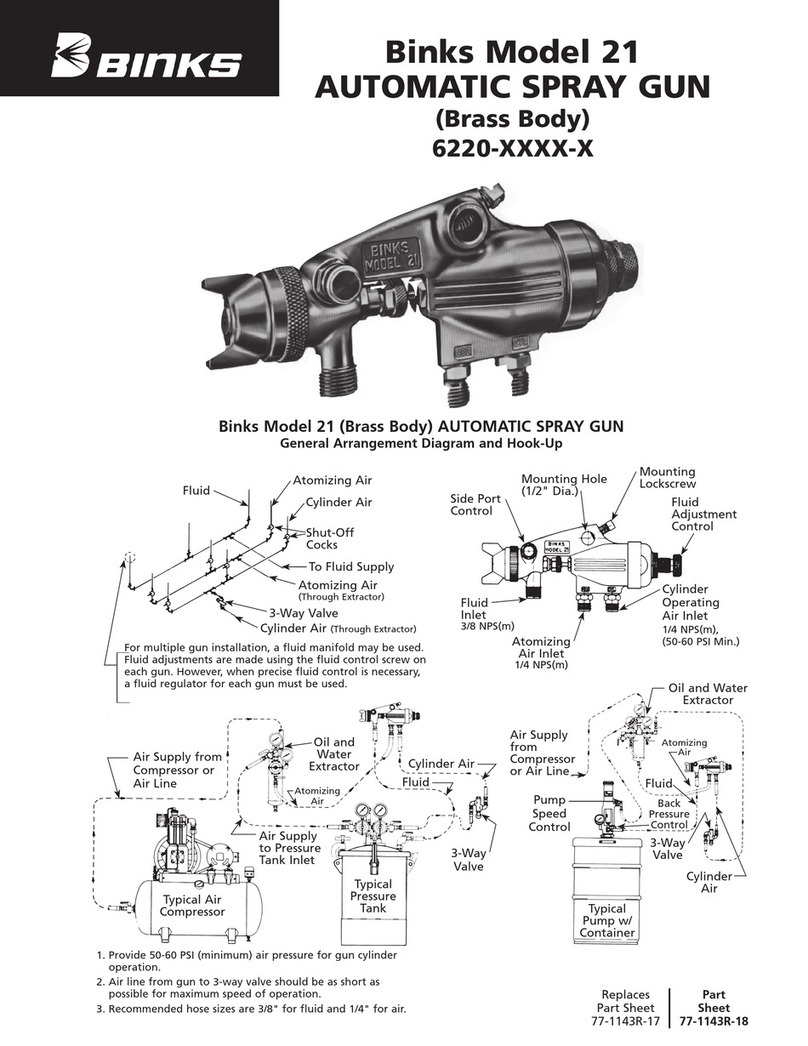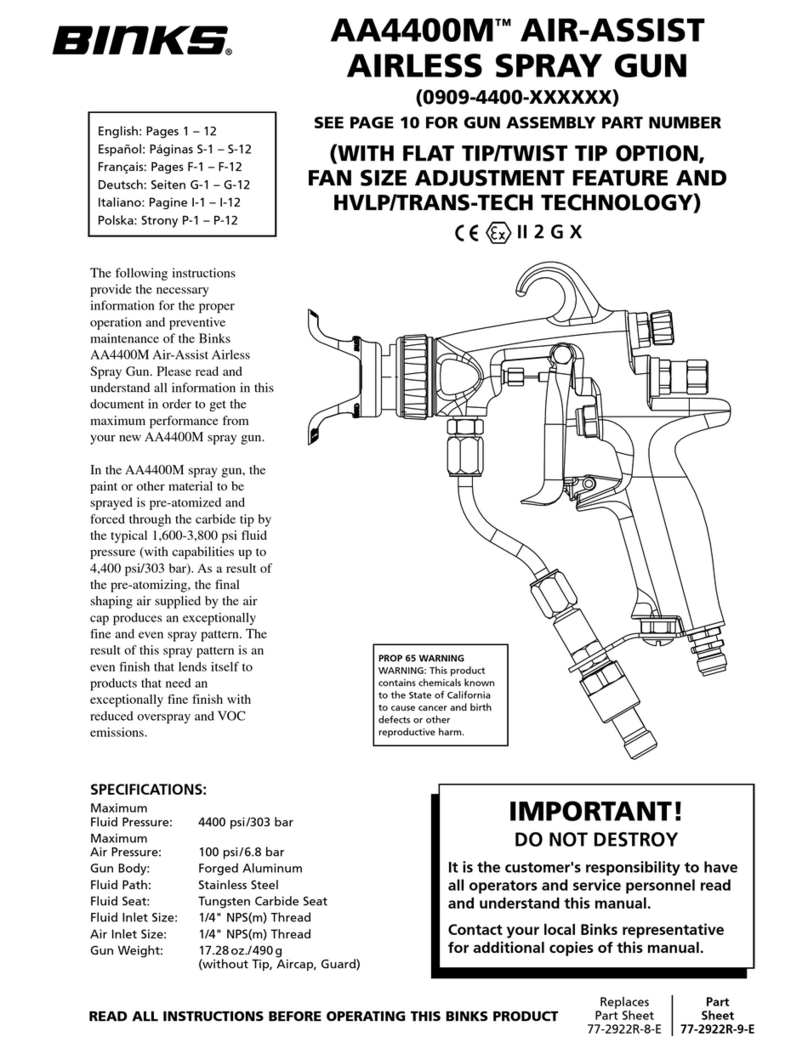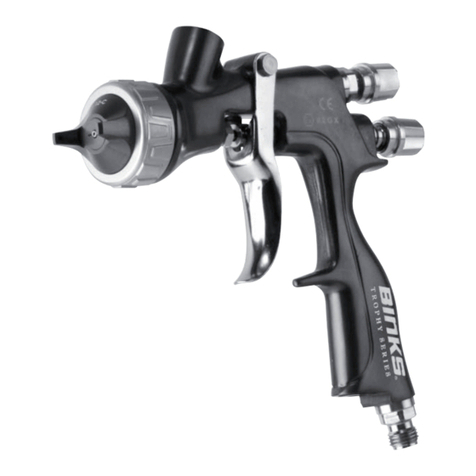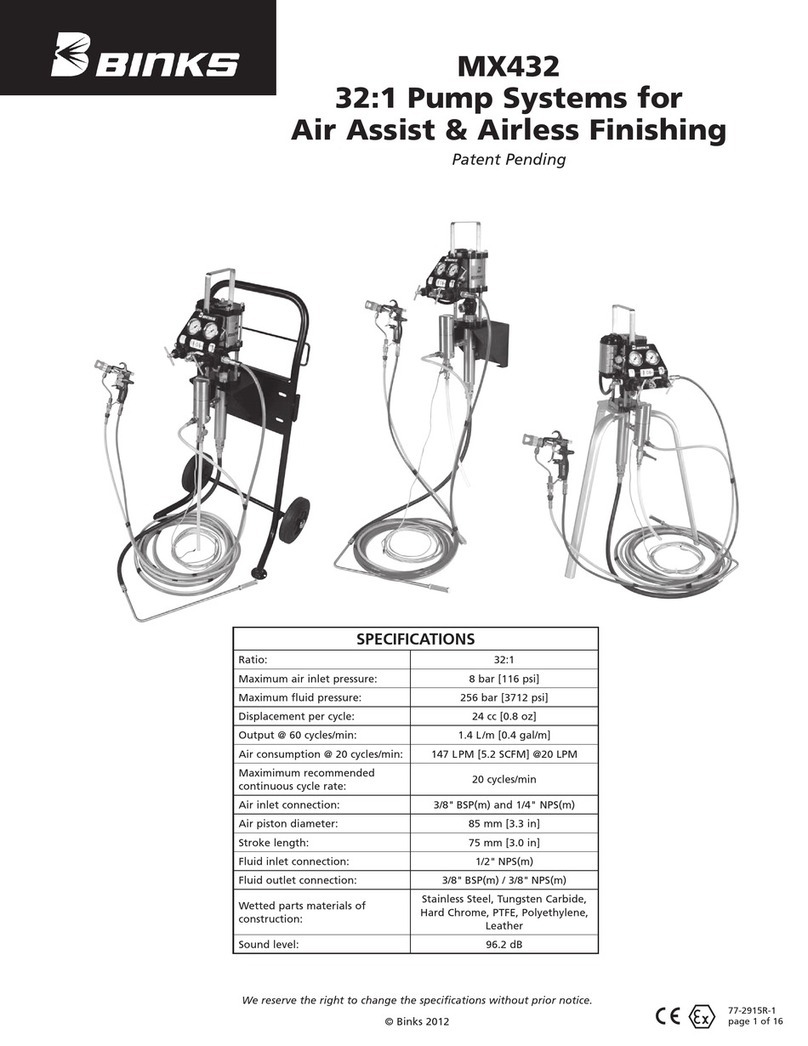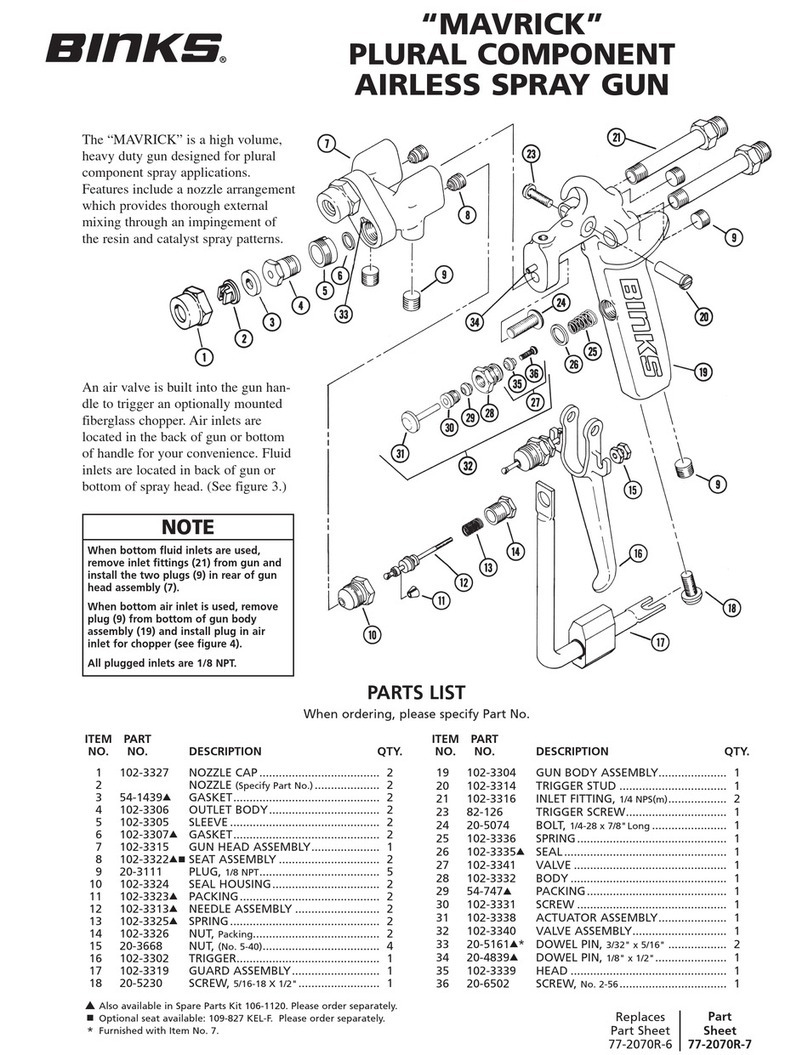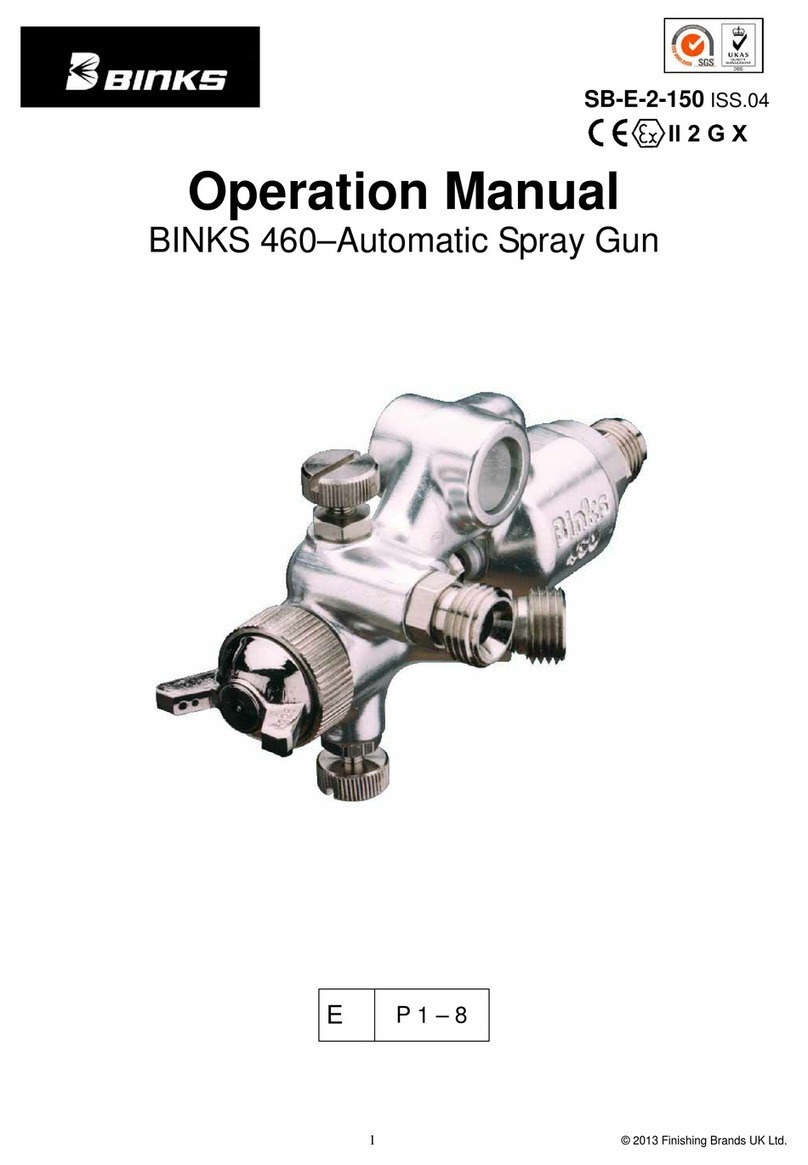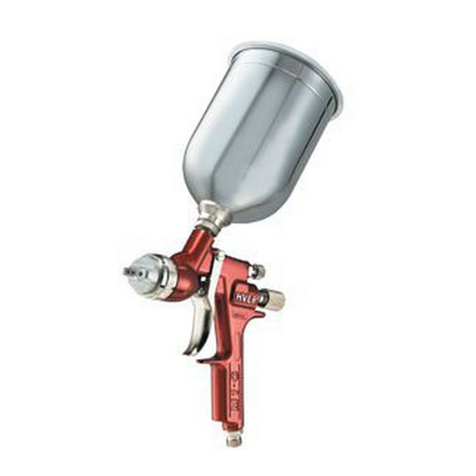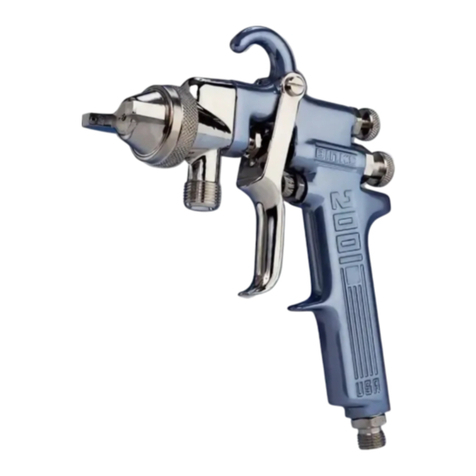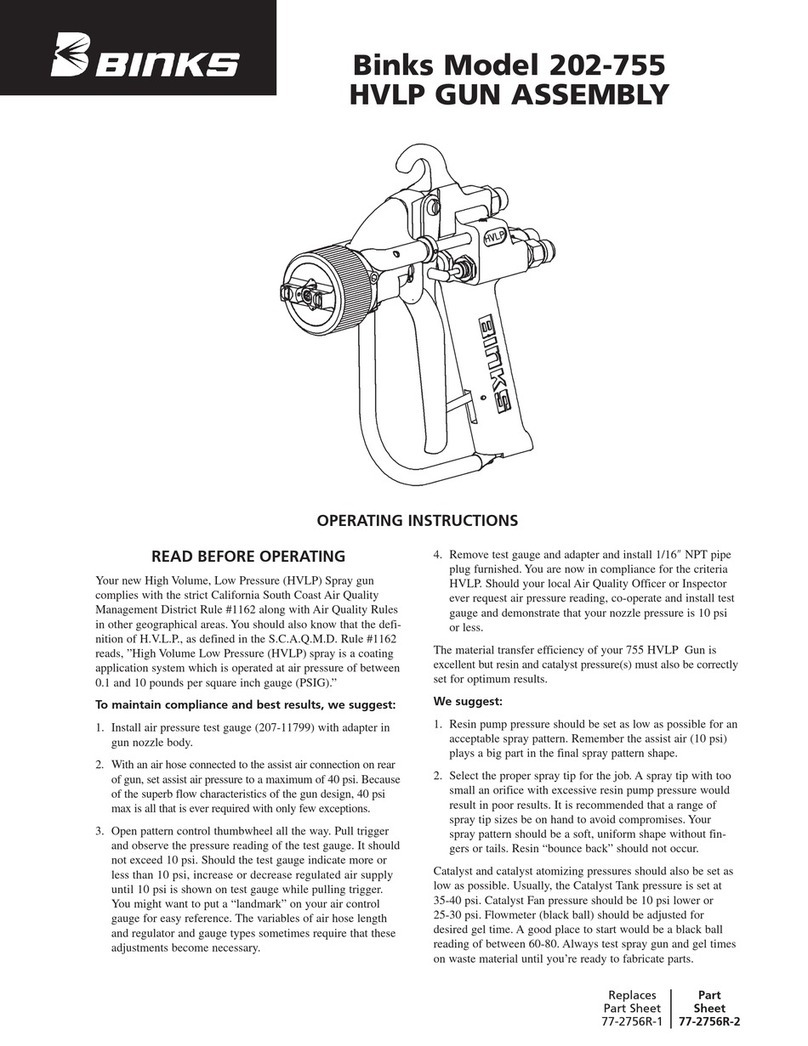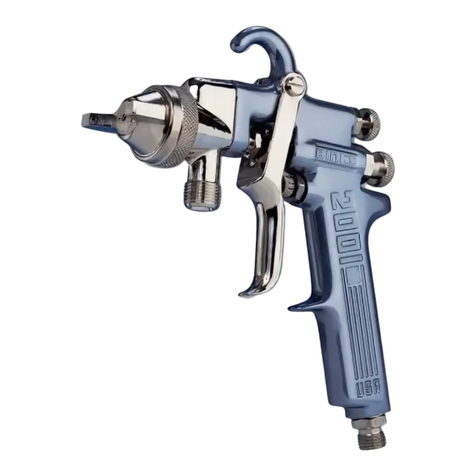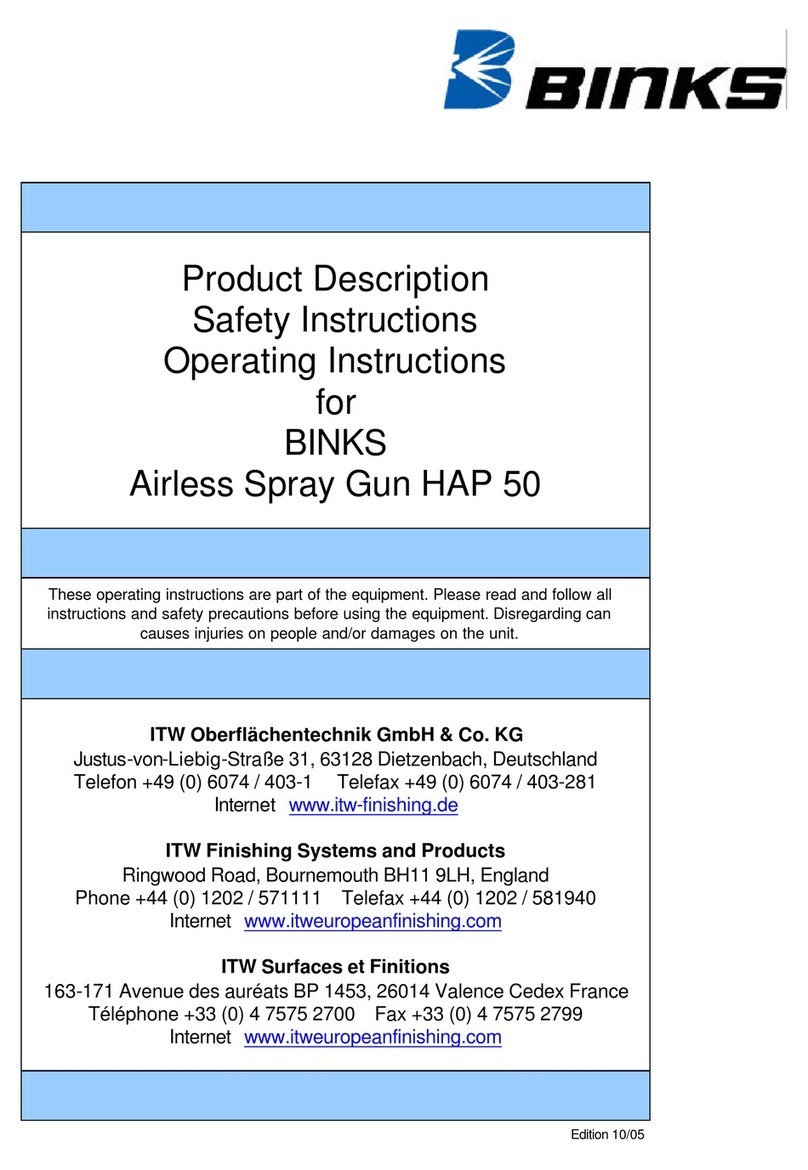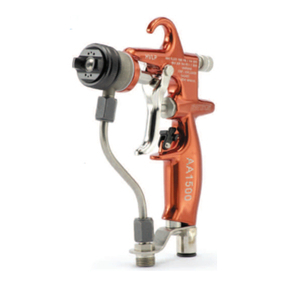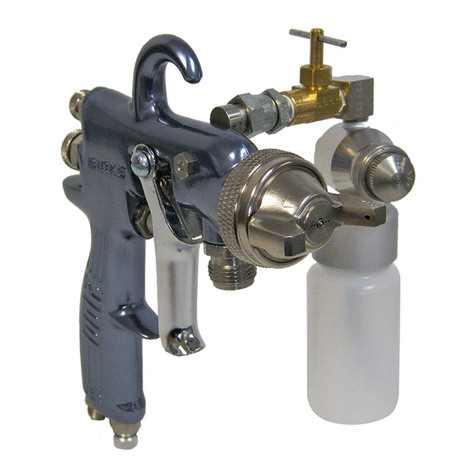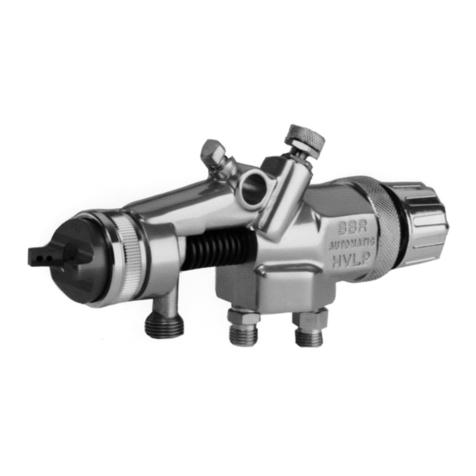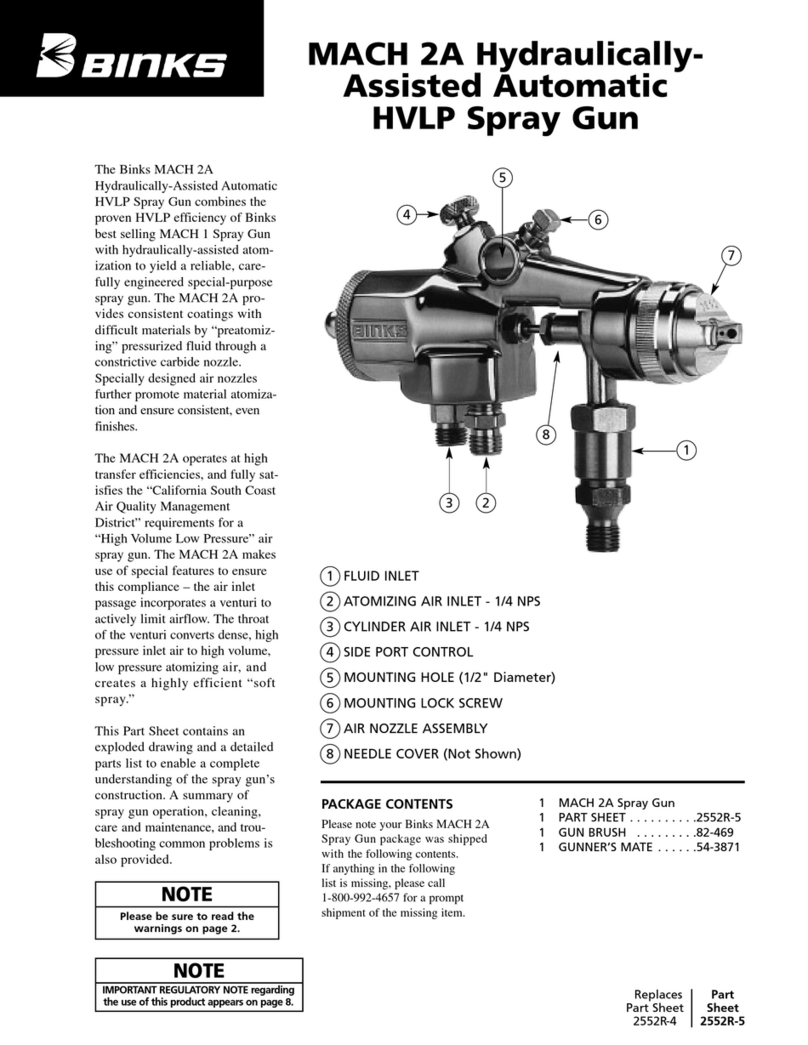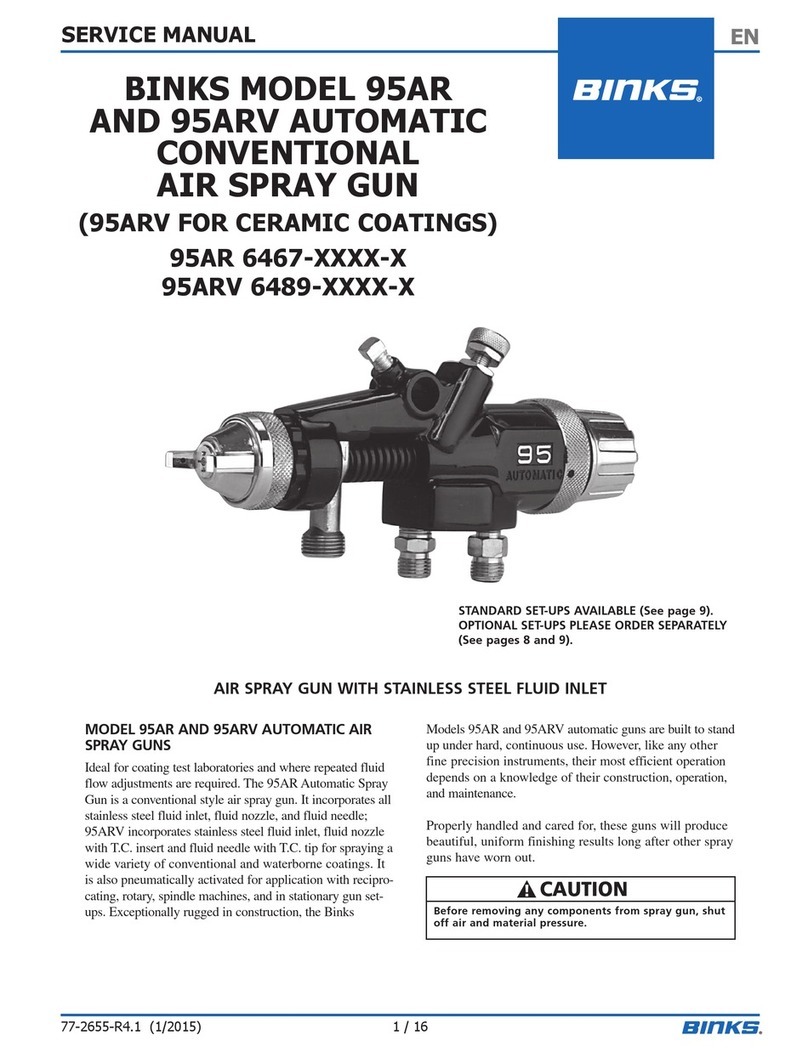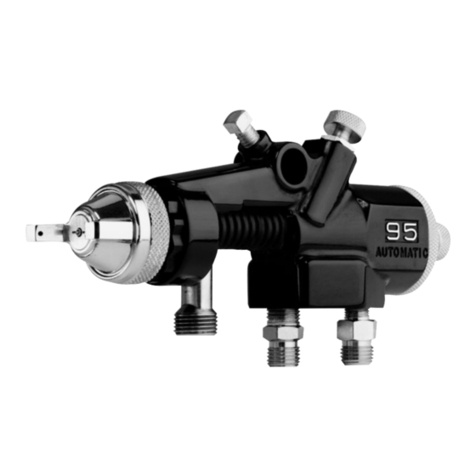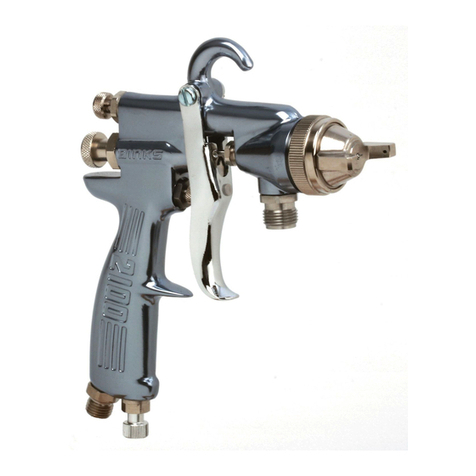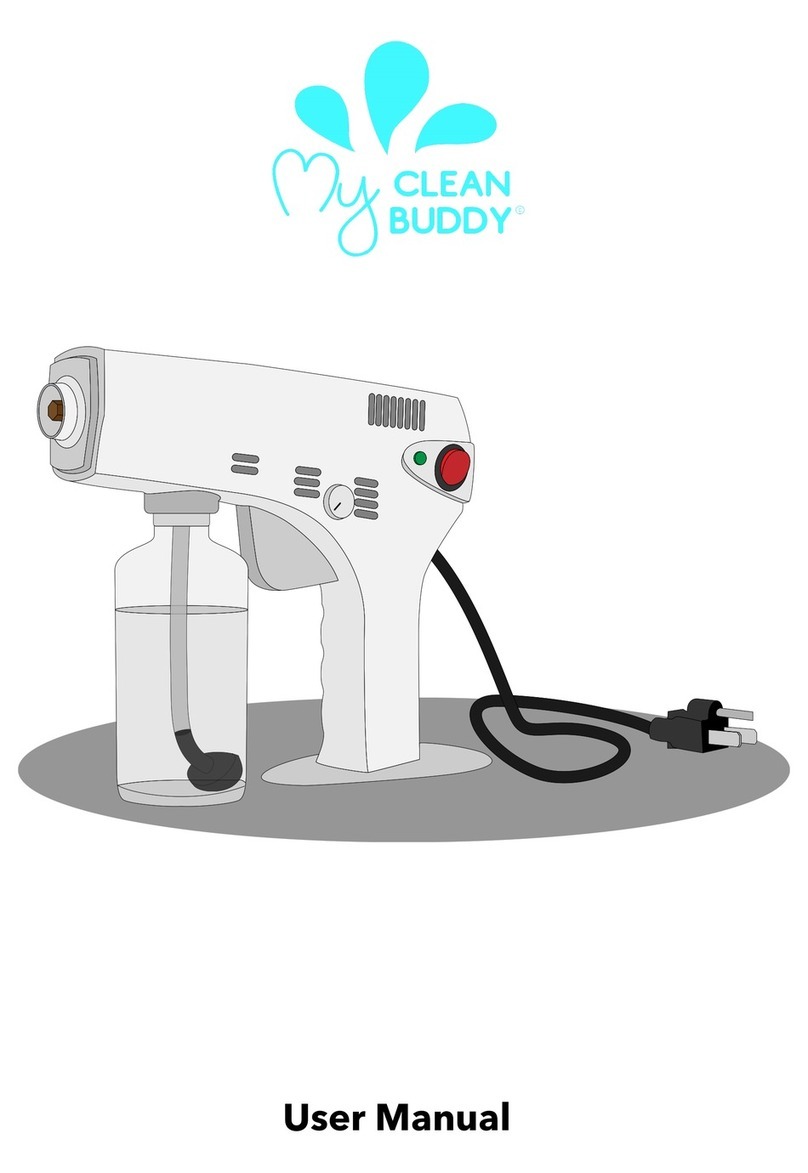Your Binks 95SL Gun is exceptionally
rugged in construction and built to stand
up under hard, continuous use. However,
like any other precision instrument, your
gun’s most efficient operation depends on
a knowledge of its construction, operation
and maintenance. Properly handled and
cared for, it will produce beautiful,
uniform finishes long after other spray
guns are worn out.
The 95SL Gun can be used in any of
three modes:
• Siphon Feed Cup Hook-Up
• Pressure Feed Pump Hook-Up
• Pressure Feed Tank Hook-Up
The siphon mode uses a lowered air
pressure in the gun to draw fluid from
the cup into the gun. Instructions for
assembling the gun with the siphon cup
are included in this Part Sheet.
Pressure feed mode for tanks rely on systems
that separately regulate fluid and air flow.
Pressure feed circulating hook-ups are usually
connected to large circulating systems.
Such a system has separate, regulated fluid
and air flows. We recommend choosing a
smaller fluid nozzle if you are using either
of the pressure feed systems.
On this page are brief descriptions and
illustrations of the siphon feed, the
pressure feed tank hook-ups, and the
pressure feed pump hook-up.
2
HOW TO SET UP and OPERATE YOUR Binks Model 95SL SPRAY GUN
WARNING
FLUID FLOW
Regarding Paints, Solvents, and
Other Coatings Safety
Do not use open containers for storage
or disposal of paint, other coatings,
cloth, or paper used in preparation and
application. Many paints and coatings
contain volatile chemicals that are a
cause of pollution and are a health
and fire hazard. Always wear appro-
priate clothing, including gloves,
eye protection, and a respirator when
using the gun.
!
WARNING
CONNECTING TO AIR HOSE
Regarding Air Pressure Safety
Shut off air pressure before connecting
or disconnecting the air hose or before
removing any components from the gun.
For air supply, use a suitable length of
5/16" diameter air hose fitted with a
1/4" NPS(f) connector at the gun end.
For hose lengths over 50', use a 3/8"
diameter hose.
!
OIL AND WATER EXTRACTOR
Achieving a fine spray finish without the use of a good oil and water extractor is
almost impossible. A regulator/ extractor serves a double purpose. It eliminates
blistering and spotting by keeping air free of oil and water, and it gives precise
air pressure control. Set the atomizing pressure to allow for any drop in air pressure
between the regulator and the spray gun. We recommend the HFRL-508 Oil and
Water Extractor/Regulator for use with the 95SL gun.
SIPHON FEED (CUP) HOOK-UP
In this mode, air pressure for atomiza-
tion is regulated at the extractor.
The amount of fluid is adjusted by the
fluid control knob (20) on the gun,
viscosity of paint, and air pressure.
HOW TO SET UP YOUR GUN FOR SIPHON APPLICATIONS
1. Insert the fluid inlet (26) into the cup’s
swivel nut and tighten. 2. Connect air hose from air regulator
on the extractor to air connection
(21) on the gun.
PRESSURE FEED (TANK) HOOK-UP
For portable painting operations, use
a double-regulator pressure-feed tank
hook-up. In this mode, air pressure for
both atomization and fluid supply is
regulated by two separate air regulators
on the tank.
HOW TO SET UP YOUR GUN FOR PRESSURE FEED (TANK) HOOK-UP
1. Connect air hose from air regulator on
the tank to air connection (21) on the
gun. (If tank is equipped with only one
regulator, the air line must connect from
the regulator to the extractor.)
2. Connect the fluid hose from fluid
outlet on tank to the fluid inlet (26)
on the gun.
3. Fluid delivery is controlled by various
means:
• The first regulator on the tank,
which regulates air into the tank
(this creates the fluid pressure);
• The fluid control knob (20) on
the gun, which can be used to
fine tune fluid delivery;
• Other factors, which include fluid
orifice size, fluid hose length, hose
diameter and material viscosity.
PRESSURE FEED (PUMP) HOOK-UP
Use this mode for heavy production
spraying. In this mode, air pressure
for atomization is regulated at the
extractor. Fluid pressure is regulated
at the fluid regulator.
HOW TO SET UP YOUR GUN FOR PRESSURE FEED (PUMP) HOOK-UP
1. Connect air hose from air regulator to
air connection (21) on the gun.
2. Connect the fluid hose from fluid
regulator to the fluid inlet (26) on the
gun. If the system does not require a
fluid regulator, the hose connects to
the pump’s fluid outlet.
3. Fluid delivery is controlled by various
means:
• The air regulator on the pump, which
regulates air into the pump
(this creates the fluid pressure);
• A fluid regulator, which may be
utilized on the output of the pump;
• The fluid control knob (20) on
the gun, which can be used to
fine tune fluid delivery;
• Other factors, which include fluid
orifice size, fluid hose length, hose
diameter and material viscosity.

